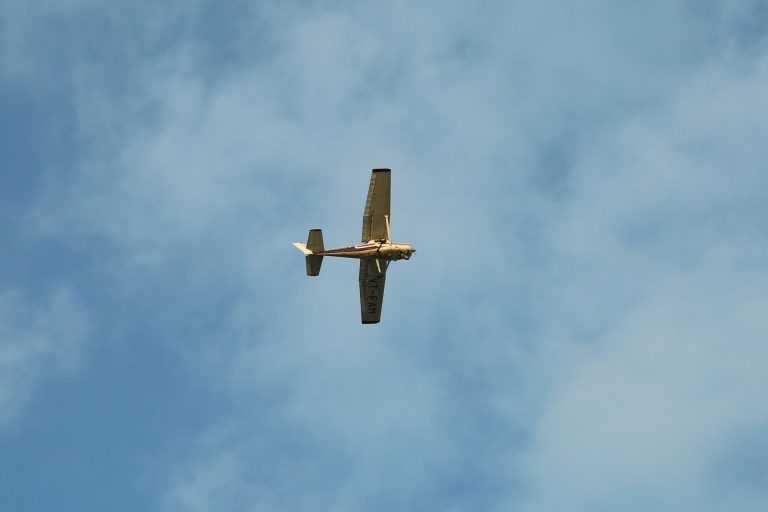For those who love aviation, flying is a passion and a life pursuit. It can also be completely baffling and amazing. Here are thirteen random facts about flight and flying that are guaranteed to make you think differently about your next trip in the sky.
- Fun Facts about 747s: 747s have flown more than 3.5 billion people.[i] It takes 90 gallons of paint to paint a 747.[i]
- Food Tastes Different Under Pressure: Under cabin pressure conditions, that is. German airline Lufthansa noticed that people seemed to order a lot of tomato juice in-flight, while they normally wouldn’t drink it on the ground. So they commissioned a study to look into whether food tasted different in-flight. Turns out that our ability to perceive salty tastes is weakened by the cabin pressure, so tomato juice tastes sweeter![iii]
- Airplanes Taste Worse Than Airplane Food: Over a period spanning the years 1978 – 1980, France’s “entertainer” Monsieur Mangetout (nee Michael Lotito) ate a Cessna 150. He did this in stages, breaking metal parts down into tiny pieces, and consuming plenty of water and mineral oil throughout the meal.
- He’ll Have the Chicken: Continuing along the planes-and-food theme is the fact that on commercial airliner flights, the pilot and co-pilot never eat the same meal. This is for the safety of the craft: if the pilot is laid low by food poisoning from the pasta, the co-pilot should still be well enough to continue the flight.
- We’ll Take Two Planes: It’s probably not surprising to learn that the President and Vice President of the United States never fly together—nor do they fly with the Speaker of the House of Representatives. As the first, second, and third in the chain of succession, a craft carrying any two of these passengers could lead to serious disruption to the U.S. government if it crashed. For similar reasons, Prince Charles and his son, Prince William, don’t fly together, as they are second and third in line to the throne.
- Tough Standards: Hiring standards for flight attendants used to be extremely strict. In the late 1930s, cabin crew had to be women under the age of thirty who weighed no more than 118 pounds. For a while, they also had to be registered nurses.[iv] While the rules have relaxed somewhat today, flight attendants still need to have good physical health and comprehensive first aid training—serving drinks is actually, at best, a secondary aspect of their job. They’re there to keep you safe.
- The Industry that Never Sleeps: At any given moment, there are about 61,000 people airborne over the mainland United States. At Chicago-O’Hare Airport, one of the world’s busiest, planes take off or land every 37 seconds. More than 29,000 flights operate from the U.S. alone every day.
- Wait for the Jet Pack: Want to experience solo flight without an airplane? Don’t bother building yourself a pair of giant wings or strong legs. Human legs do have enough strength to do this, but only if the wings’ span is large enough — at least 80 feet or so.[v]
- The Right Angle: Aircraft control towers need to have constant visibility of the airfield at all times. To that end, the glass in tower windows is angled precisely at 15°, which prevents glare and reflections from blocking a controller’s view of the runways.[vi]
- Minority Activity: Only 5% of the world’s population has traveled by airplane. However, more than 80% of people say they fear flying to some degree.[vii]
- Flying Dry: According to one estimate, you can lose about two cups of water from your body for every hour you spend flying—most of it breathed out through the mouth.[viii] While estimates of water loss during flight vary, it’s well-known that flying causes dehydration in passengers, which can lead to deep-vein thrombosis (a/k/a blood clots) on long-haul flights. Drink water before, during, and after a long flight.[ix]
- Plane Life Isn’t Measured in Years: Airliners’ lifespans aren’t determined by years. Instead, they’re determined by the number of pressurizations the plane undergoes. Every time a plane is pressurized during flight, it causes stress on the plane’s fuselage. Over time, this stress causes irreparable metal fatigue and cracks. An approximate rule of thumb is 75,000 pressurizations per aircraft. In human terms, this works out to about 20-25 years for most planes.[x]
- Mercury: Kryptonite for Airplanes: Much of a plane’s fuselage is made of lightweight alumninum. One of the most damaging possible materials that can come in contact with aluminum is mercury, found in old-fashioned thermometers. Planes where mercury has been found are often quarantined and checked for damage.[xi]
[i] https://www.thrillist.com/cars/boeing-747-trivia-history-and-facts-things-you-didn-t-know-about-the-boeing-747
[ii] http://www.dawn.com/news/609022/interesting-aviation-facts
[iii] http://www.shortlist.com/home/tomato-juice-tastes-better-in-the-air
[iv] http://en.wikipedia.org/wiki/Flight_attendant#History
[v] http://www.dawn.com/news/609022/interesting-aviation-facts
[vi] http://www.dawn.com/news/609022/interesting-aviation-facts
[vii] https://www.baatraining.com/top-10-interesting-facts-about-aviation/
[viii] https://engineering.mit.edu/engage/ask-an-engineer/can-humans-fly-like-birds/
[ix] http://www.telegraph.co.uk/travel/723733/What-happens-to-your-body-when-you-fly-and-how-to-beat-the-pain.html
[x] https://www.baatraining.com/top-10-interesting-facts-about-aviation/
[xi] http://www.keystoneaviation.com/blog/7-airplane-fun-facts/#sthash.Z9yHPm0b.dpbs


